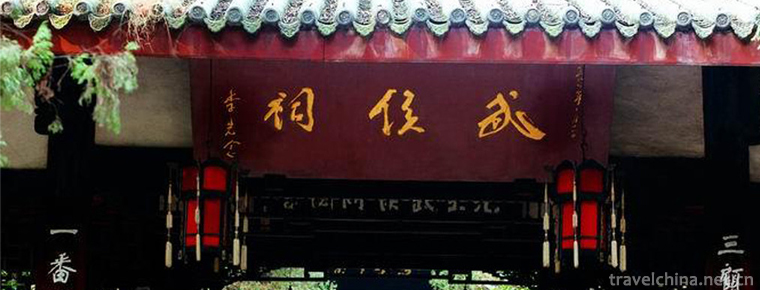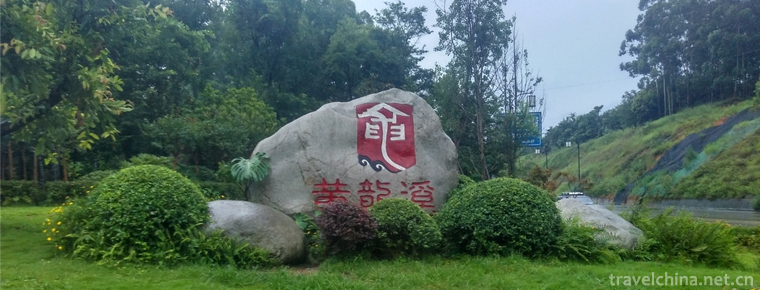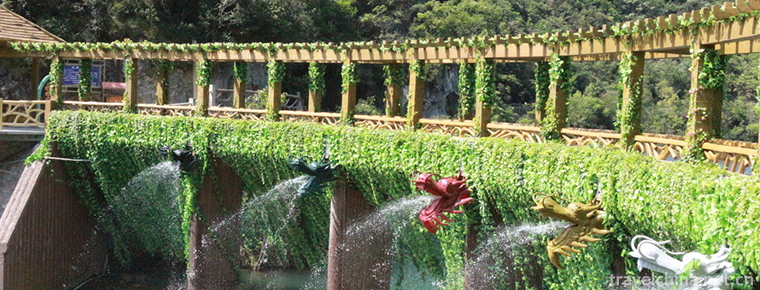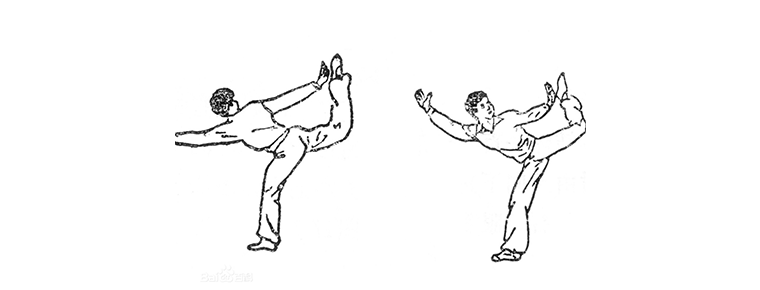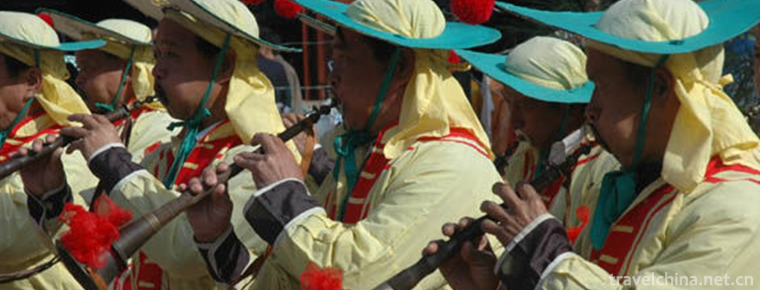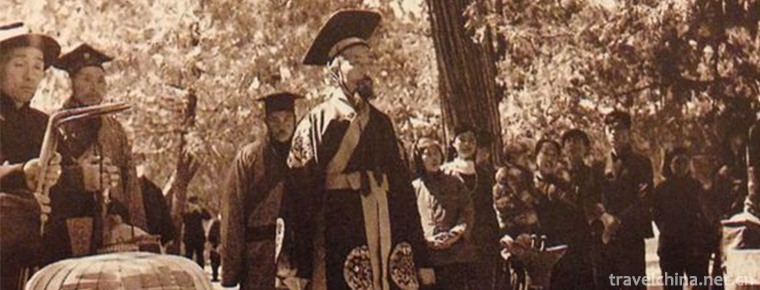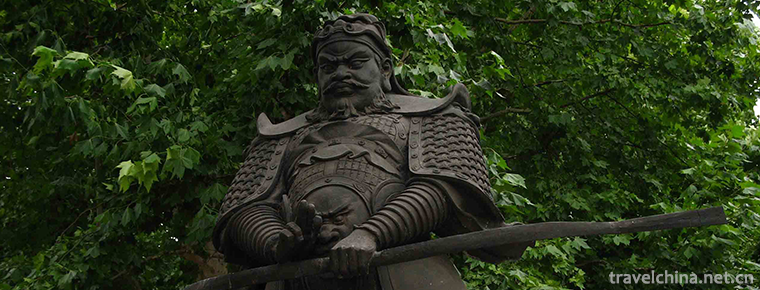Brewing Techniques of Fen Liquor in Xinghua Village
Brewing Techniques of Fen Liquor in Xinghua Village
Fen wine brewing technology in Xinghua Village, Shanxi Province's local traditional handicraft, one of the national intangible cultural heritage.
The brewing process of Fen liquor in Xinghua Village is complicated. Fen liquor in Xinghua Village is finally brewed through six main processes: grinding, moistening, steaming, fermentation, distillation and storage.
On May 20, 2006, Fenjiu brewing technology of Xinghua Village was approved by the State Council of the People's Republic of China and listed in the first batch of national intangible cultural heritage list, item number_-59.
historical origin
The archaeological literature "The Origin of Wine in China from the Cultural Relics unearthed in the Neolithic Age" shows that 4,000 years ago, the site of Xinghua Village was indeed one of the birthplaces of ancient wine-making in China. The cultural relics unearthed at Xinghua Village site truly record the birth history of Fenjiu.
From 561 to 564 AD, Gao Zhan of the Northern Qi Dynasty was named Emperor Wucheng. Emperor Wucheng often drinks Fenqing in Jinyang. He was writing from Jinyang, the military center of the Northern Qi Dynasty, to recommend Fenqing liquor to King Xiaoyu of Kangshu, indicating that Fenqing liquor was of high quality and famous enough to reach the level of "national famous liquor".
In the Tang Dynasty, there were two epoch-making technological breakthroughs: first, the use of "dry harmony" technology; second, the use of distillation technology for brewing, twice fermentation, twice distillation, forming the embryonic form of modern Fenjiu technology "two distillation and two distillation". Song, Yuan, Ming and Qing dynasties continued this process.
In the Song Dynasty, there were many restaurants in Xinghua Village, and both production and marketing flourished. Every year, the Dragon Boat Festival held a "flower and wine party".
In the Yuan Dynasty, distilled liquor in China was greatly developed and popularized, especially in the north, which gradually shared the autumn color with yellow rice wine. Xinghua Village Wine was reformed in the Yuan Dynasty. Its color was as clear as ice, fragrance as Youlan, and taste as mannose. It became the best wine.
During the Ming and Qing Dynasties, Fen liquor became the first famous liquor in China at that time because of its long history, mature technology, excellent quality and reputation of royal tribute liquor. Shanxi merchants who dominated the Chinese business circles for hundreds of years rose in the Ming Dynasty and flourished in the Qing Dynasty. With the footsteps of Shanxi merchants, the brewing techniques of Fen liquor in Xinghua Village spread rapidly to all parts of the country and combined with the local water quality, climate and main and auxiliary materials, and changed into local liquors, such as Maotai liquor in Guizhou, Xifeng liquor in Shaanxi, Hanfen liquor in Hubei and Hunan. Xiangfen Liquor, Jiamusi Fen Liquor of Heilongjiang Province, etc.
In 1915, Fenjiu won the first prize in Panama Race, which immediately attracted the attention of Yan Xishan, the Shanxi Governor, and appointed a special person to consult with Yang Deling. In January 1919, by Yan Xishan's Deputy officer Zhang Ruping and other five people, each subscribed 500 yuan, a total of 2500 yuan, Yiquanyou liquor shares in Taiyuan Qiaotou Street established Jinyufen Liquor Co., Ltd. Operating mode: Yiquan Yong wine supply, Jinyu company distribution, Yang Deling as manager. The establishment of Jinyu Company became the first private joint-stock enterprise in liquor industry in modern China. On May 4, 1923, the Beiyang Government promulgated the Trademark Law. In 1924, Yang Deling, manager of Jinyufen Liquor Company, took the lead in registering the first trademark of Chinese liquor industry, the trademark of sorghum and Fenfen Liquor (now collected in Fenjiu Museum). In 1932, Yiquanyou resold its assets to Jinyu Company, and Yiquanyou disappeared. Under the leadership of General Manager Yang Deling, Jinyu Company has created the first brand system in Chinese liquor industry with liquor as the main component and liquor as the supplement. Its main products are Laobaifen, Zhuyeqing, Baiyufen, Rosefen and Zhuangyuan Hong.
After the outbreak of the War of Resistance Against Japan, the production of Jinyu Company gradually shrank, and almost completely stopped by the end of 1947. Fenyang area was liberated in 1948. In September 1948, Yiquanyou Brewery of Jinyufen Liquor Company resumed production. In 1949, the people's government established the state-owned Fen Liquor Factory. In the early stage of the establishment of Fen distillery, it was almost a piece of ruins. In the past 50 years, Fen distillers, with the strong support of the state, have carried out nine renovations and expansion successively, and achieved results in scale efficiency.
In 1993, Shanxi Xinghua Village Fen Liquor Factory Co., Ltd. was reorganized. It was the first listed company in Shanxi Province and the first listed company in Chinese liquor industry.
Technological characteristics
Fen liquor brewing technology of Xinghua Village is based on "grabbing sorghum" in Jinzhong Plain as raw material, saccharifying starter made of barley and pea, and adopting the unique brewing technology of "steaming twice clear". The wine is clear and transparent, fragrant and fragrant, with a soft, sweet, mellow and refreshing entrance. The savvy of brewers plays an important role in the brewing process, such as koji-making, fermentation, distillation and so on. For thousands of years, this skill has been passed down from generation to generation in the way of oral transmission, mentoring and apprenticeship, and has been continuously innovated and developed. It still plays an irreplaceable key role in the process of Fenjiu brewing.
In 1932, Mr. Fang Xinfang, an expert in Microbiology and fermentation, attributed the brewing process of Fen liquor to the "seven secrets". That is, "people must get their essence, water must be willing together, Qubi must be timely, sorghum must be real, pottery must be clean, VATS must be wet, fire must be slow" technology of "second evaporation and cleaning".
Technological process
The traditional material of Fenjiu Daqu is pea and barley. First, the raw material is mixed proportionally and crushed on the stone mill. When crushed, the proportion of coarse and fine is controlled through the feed port of the stone mill. Then the crushed raw materials are stirred manually with water in the iron pot. After stirring, the raw materials are evenly loaded into square bending moulds of 9 inches long, 6 inches wide and 2 inches thick. Then they are manually trampled to make a brick-like billet, which is trampling. The trampled billets are transported to the wardrobe to be arranged, which is called recumbent music. After the starter is crisp and sharp, it is sealed for 2-4 days with a wet Festival mat. This process is called Shangmu, and then it enters the stages of air-curing, tide-fire, fire, afterfire and curing in turn. In these processes, there are two main tasks: turning over and watching music. In order to make the billet drunk evenly, it should be turned over at all stages of airing mould, tide fire, big fire and afterfire, and it should be turned over more than 10 times by hand. Watching music is based on the temperature rise and fall of the billet. Through controlling temperature and humidity, three kinds of fen-sprinkled koji, namely, clear stubble, red heart and late fire, were made. The total incubation days from the billet entering to the starter room to the starter room are 26-28 days, and then the starter room is checked and accepted.
There are six main technological processes in the production of Fenjiu, which are called one mill, two run, three steaming, four fermentation, five distillation and six aging. First, the sorghum is crushed into four, six and eight pieces on the stone mill. The size of the crushed grain is controlled by the feed port of the stone mill. Then water is added to wet the rice dumplings. This process is called wetting rice dumplings. After 24 hours of wetting and softening, the raw materials are steamed in a steaming pot for 80 minutes. This process is called steaming rice dumplings. After evaporation, the method of cold dispersion is to lift the raw material into the air with a spade, which is called lifting piece. After cooling to a certain temperature, add the crushed koji in proportion, stir evenly and put it into the basement tank for 28 days to ferment. Before fermentation, the basement tank should be cleaned with pepper water to sterilize and disinfect. Fermented rice dumplings have a certain consistency, and then add rice husk, rice husk and other accessories to mix evenly, so that it is loose, the added accessories are also sterilized and disinfected by high-temperature steam. Then, the Zong added with excipients is evenly sprinkled into the distillation pot layer by layer, which is called steamer filling. The level of steamer determines the rate of liquor production and the number of head and tail. After steamer filling, distillation, steam after cooling out is the stubble liquor, stubble liquor is generally about 75 degrees. After the stubble liquor was finished, the raw materials were repeated starter addition, fermentation and distillation. The produced liquor was two-stubble liquor, and the second-stubble liquor was generally about 65 degrees. The large-stubble liquor and the second-stubble liquor are the finished Fenjiu liquor after being mixed proportionally and stored in a ceramics VAT warehouse.
In the whole brewing process, some key processes are completed by manual operation. For example, the control of water temperature and water quantity when adding water to moisten rice dumplings, the adjustment of stacking temperature according to the difference of natural hot and cold seasons, the grasp of the process of steaming red rice dumplings to be ripe but not sticky and not fresh inside, slurry to be uniform, and the tedious work of washing stone plate caps and around the cylinder with pepper water two times before entering and leaving the cylinder, and manual pit digging need to be done. Strict and flexible manual operation, these are mechanized production is dwarfed and irreplaceable.
Inheritance and Protection
Inheritance value
Fen liquor in Xinghua Village is the representative of "fragrance type" in Chinese liquor industry, and it is also a rare type of liquor with unique quality. In the development and ups and downs of liquor civilization and human history, Fen liquor in Xinghua Village always has irreplaceable significance and value, especially its technological value.
1. Irreplaceability. Although Fenjiu can not avoid the trend of modern industrial mechanized production, in addition to some processes which can be standardized and controlled, such as grinder, trampler, cooler instead of traditional stone mill, manual Trampler and spade, other main processes need manual intervention, monitoring and flexible grasp, such as koji-raising and koji-making. With the flexible control of temperature and humidity in different seasons, the strict operation of producing three kinds of koji by "two drying and two heating", the fine adjustment of heat preservation range during fermentation, the time and intensity of spreading ripe rice dumplings in dustpan before distillation, etc., all condense the summary of several thousand years'wine-making experience and condense the traditional wisdom and price that modern mechanization can not replace. Value.
2. Nationality. Different from the Western liquor-making methods of saccharification and fermentation, traditional Chinese liquor-making method is solid-state starter fermentation. Saccharification and fermentation of liquor-making starter are carried out simultaneously, which is an important invention of liquor-making technology in China. The Fen liquor of Xinghua Village is the first one to hold the banner of national characteristics, which has distinct national characteristics.
3. Uniqueness. Fen Liquor Brewing is a complex fermentation of clear stubble, afterfire and red heart with barley and pea as raw materials. It is different from cellar separated fermentation and distillation and fermentation of "steaming twice, clearing to the end", which are important processes different from other liquors and ensure the unique natural quality of Fen Liquor.
4. Rare. Among the existing liquor types, Luzhou-flavor liquor and Maotai-flavor liquor produced by modern industry are in the majority, because the brewing cost of this liquor is relatively small, and it can satisfy the taste of the public and occupy more market share, so many enterprises have followed suit. In this way, the characteristics and quality of Fen liquor in Xinghua Village are relatively scarce, so it needs urgent protection and attention.
Current situation of inheritance
Fen liquor system is gradually expanding in the development. Fen liquor as mother liquor produces a series of old Baifen liquor, bamboo leaf green liquor, rose Fen liquor, Baiyufen liquor and so on. The winery in Xinghua Village also has "apricot dividing" and "apricot blossom" and so on.
Heritage figures
Guo Shuangwei, male, was born in March 1949. In May 2009, Guo Shuangwei was selected as the representative successor of the third batch of national intangible cultural heritage projects and declared in Fenyang City, Shanxi Province. Project Name: Fen Wine Brewing Techniques of Xinghua Village.
protective measures
Over the years, with the strong support and deep concern of the Fenyang Municipal Government, relevant departments have taken various measures to effectively protect and inherit this precious cultural heritage.
1. Protection of sites. In 1987, Xinghua Village Site was declared as a key cultural relic protection unit in Shanxi Province. In 2004, Fenjiu Workshop Site was declared as a key cultural relic protection unit at the provincial level. In 2006, Fenjiu Workshop Site was declared as a national key cultural relic protection unit. By declaring cultural protection units, the protection of the site can be legally followed.
Fenyang still preserves the relics of liquor-making workshops, ancient wells, stone tablets, plaques and old streets in the Ming and Qing dynasties, and the chain of inheritance of traditional techniques is still continuing. This historical inheritance has become a solid foundation for protecting the traditional techniques of Fen liquor-making.
In 2007, the site of Fenjiu Workshop was comprehensively restored to restore the original appearance of "Yiquan Swimming" during the Republic of China, and the site was developed into a tourist attraction of Fenjiu industrial tourism. The site was effectively protected and exploited by means of humanistic tourism.
2. Protection of process. In 2007, the Fenjiu Handicraft Workshop invested and rebuilt by Fenjiu Group has been put into production. The antique distiller has been made. The traditional handicraft tools and handicraft process have been restored in the whole production process, and the pure handicraft Fenjiu has been produced. This winery is also a training base for traditional brewing techniques. It has been developed into a tourist attraction for Fenjiu industrial tourism to protect and display the traditional brewing techniques of Fenjiu.
To formulate and implement protection plans for successors at all levels, promulgate and implement the Measures for Protection and Reward of successors, establish personal files of successors, give regular physical examination and grant allowances to veteran technicians, improve their living conditions and mobilize their enthusiasm. Organize special persons to interview the old winemakers, record and arrange their oral history and craft, and publish them; produce video documentaries of traditional brewing technology. To formulate and implement measures for inheritance and management of Fenjiu liquor technology.
3. Environmental protection. In June 1996, the people's government of Fenyang County, in the form of documents issued by Fenzheng 27, issued the Notice on the Establishment of Special Environmental Protection Zone of Fenjiu Factory in Xinghua Village, which implements special environmental protection in areas with Fenjiu as the center and a radius of 3 kilometres and a radius of about 30 square kilometres. It strictly implements the "three simultaneous" examination and approval system and strictly implements it. It is strictly forbidden to build new heavy polluting enterprises in the reserve for controlling total atmospheric quantity and discharging sewage up to the standard. The existing enterprises that fail to meet the environmental protection standard should be gradually reformed by stages and time limits.
In order to improve and protect the ecological environment of wine-making production, Fenjiu Industrial Garden was built in 2005, and more than 300 mu apricot forests were planted, which reproduced the scenery of Xinghua Village in that year. At the same time, the greening area of Fenjiu Group has reached 55%, which has truly become a garden factory.
4. Protection of culture. Founded in 1984, Fenjiu Museum is the earliest wine culture museum in China. After several extensions, the newly completed Fenjiu Museum is a more comprehensive and systematic museum built on the basis of the original museum, which was completed in October 2007.
In 2006, the Fenjiu Culture Research Association was established, and many books on Fenjiu culture, technology and history were compiled and published, and it was appraised as the academic activity base of Chinese liquor culture.
social influence
Important activities
In 2004, the first Fenjiu Culture Festival in Xinghua Village, Shanxi Province, opened in Xinghua Village, Jiudu. It focuses on inheriting, developing, promoting and innovating Fenjiu culture, so that people can have a better understanding of Fenjiu.
In 2007, the 2nd Fenjiu Culture Festival of Xinghua Village in Shanxi Province was held in Fenjiu Group. Through this cultural activity, we can achieve the function of popular word-of-mouth transmission and awaken the protection consciousness of the surrounding people.
In 2017, the first Shanxi (Fenyang Xinghua Village) World Wine Culture Exposition opened in Fenyang City. More than 1500 people, including the leaders of 17 famous Chinese liquor enterprises and representatives of more than 500 global liquor industry enterprises, gathered in Fenyang to taste alcohol, enjoy liquor culture and discuss the development of liquor industry.
In 2018, the 2nd Shanxi (Fenyang Xinghua Village) World Wine Culture Exposition was held in Fenyang City. At the foot of Luliang Mountain and along the Bank of Fenhe River, more than 600 wine manufacturers, distributors, retailers and wine culture experts from all over the world came together to "raise a glass of Fenyang, taste the world" and talk about the development plan of wine industry.
Honorary recognition
In 1915, Old Baifen Wine won the first-class gold medal at Panama Race celebrating the opening of the Panama Canal to the Pacific Universal Exposition.
In 1952, Fen liquor became one of the four famous liquors in China at the second liquor evaluation meeting.
In 1963, at the 2nd Wine Appraisal Meeting in China, Fen Wine and Zhuyeqing Wine were awarded the title of National Famous Wine.

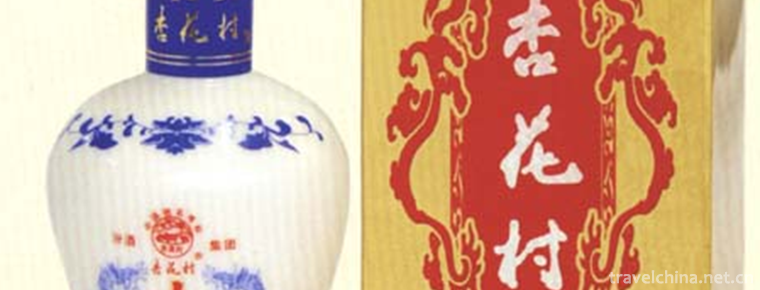
-
Wuhou Temple in Chengdu
Martial Marquis Memorial Temple,Chegdu city,Sichuan Province.
Views: 213 Time 2018-09-29 -
Huang Longxi
Huanglong Valley, Shuangliu District, Chengdu, Sichuan, China.
Views: 121 Time 2018-10-02 -
Dukezong Ancient City
The ancient city of dkkzong is the best preserved and largest Tibetan residence in China.
Views: 184 Time 2018-10-20 -
Wulong River Scenic Spot
Wulong River Tourism Scenic Area will soon be promulgated as a national scenic spot and a national natural forest reserve. The main river in the scenic spot is Wulong River.
Views: 150 Time 2018-12-22 -
Wuying National Forest Park
Wuying National Forest Park is located in Wuying District, Yichun City, Heilongjiang Province, about 19 kilometers away from the urban area. It is a concentrated protected area of Korean pine in China.
Views: 283 Time 2018-12-22 -
Poke feet
Poking feet is one of Chinese boxing. Leg and foot kungfu is the main form. It is said that it originated in the Song Dynasty and flourished in the Ming and Qing Dynasties.
Views: 109 Time 2019-04-22 -
Hebei Drum Music
Hebei drum and percussion music is a local traditional music mainly composed of percussion instruments and percussion instruments. It has been an important type of music.
Views: 119 Time 2019-05-02 -
memorial ceremony for Confucius
The sacrifice to Confucius is a grand sacrifice ceremony held mainly in Confucian temples for the sake of revering and remembering Confucius, which is a miracle in the history of world sacrifice and h.
Views: 130 Time 2019-05-05 -
Legend of King Qian
The legend of King Qian is a local folklore derived from the life stories of King Qian Si of Wuyue. Linan is the hometown of King Qian. After his death, his legends have been widely circulated in Lina.
Views: 135 Time 2019-06-10 -
Brewing Techniques of Fen Liquor in Xinghua Village
The brewing process of Fen liquor in Xinghua Village is complicated. Fen liquor in Xinghua Village is finally brewed through six main processes: grinding, moistening, steaming, fermentation, distillat.
Views: 125 Time 2019-07-08 -
Neijiang Normal University
Neijiang Normal University is a full-time general undergraduate college organized by Sichuan Provincial People's Government. Neijiang City, where the school is located, is located in the middle of Che.
Views: 173 Time 2019-08-31 -
Diexi earthquake site
Diexi earthquake site is located 2.5 km southeast of Jiaochang Township, Maoxian County, on the second grade platform on the East Bank of Minjiang River.
Views: 356 Time 2020-11-07
